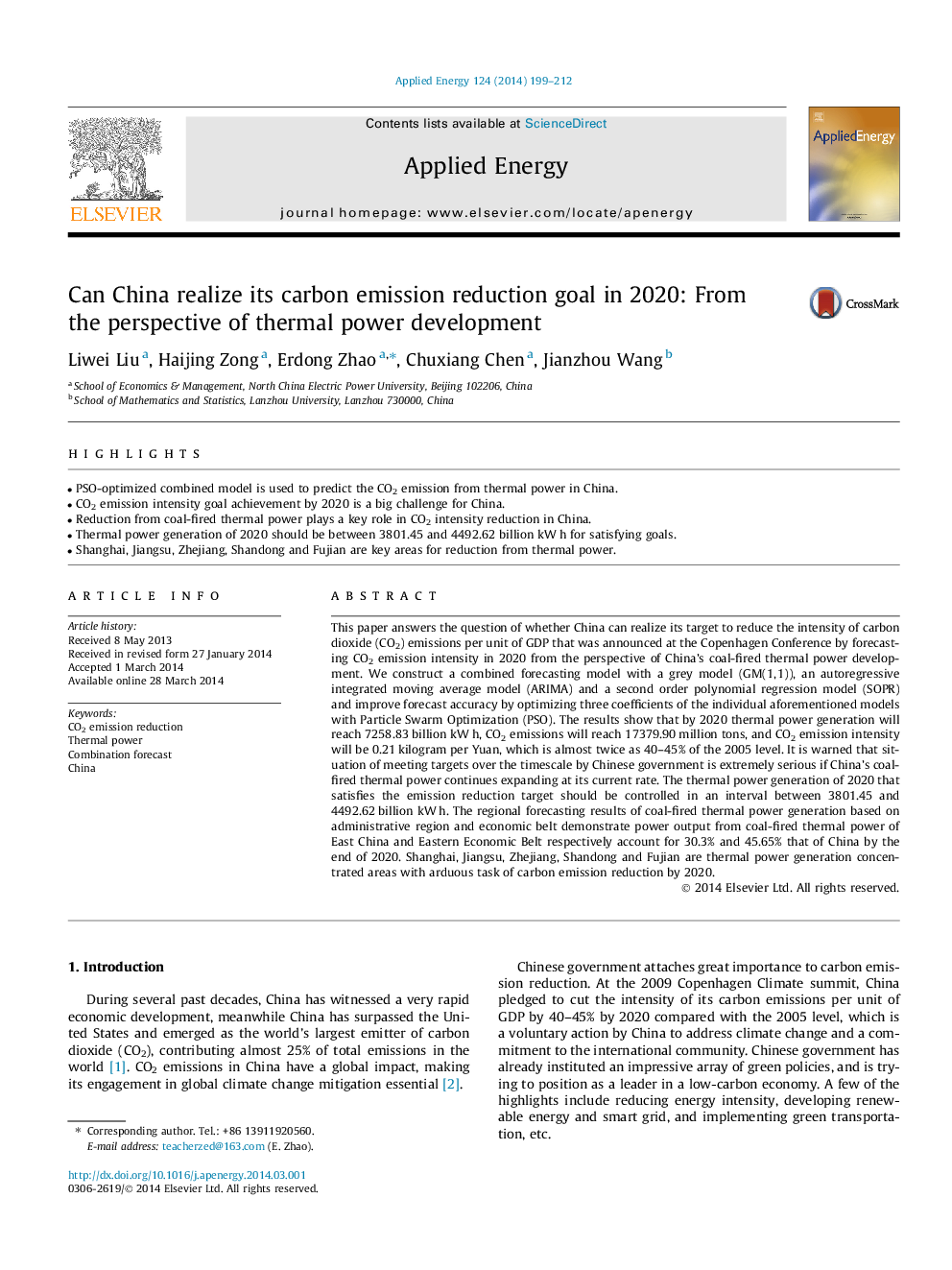| کد مقاله | کد نشریه | سال انتشار | مقاله انگلیسی | نسخه تمام متن |
|---|---|---|---|---|
| 242825 | 501903 | 2014 | 14 صفحه PDF | دانلود رایگان |
• PSO-optimized combined model is used to predict the CO2 emission from thermal power in China.
• CO2 emission intensity goal achievement by 2020 is a big challenge for China.
• Reduction from coal-fired thermal power plays a key role in CO2 intensity reduction in China.
• Thermal power generation of 2020 should be between 3801.45 and 4492.62 billion kW h for satisfying goals.
• Shanghai, Jiangsu, Zhejiang, Shandong and Fujian are key areas for reduction from thermal power.
This paper answers the question of whether China can realize its target to reduce the intensity of carbon dioxide (CO2) emissions per unit of GDP that was announced at the Copenhagen Conference by forecasting CO2 emission intensity in 2020 from the perspective of China’s coal-fired thermal power development. We construct a combined forecasting model with a grey model (GM(1, 1)), an autoregressive integrated moving average model (ARIMA) and a second order polynomial regression model (SOPR) and improve forecast accuracy by optimizing three coefficients of the individual aforementioned models with Particle Swarm Optimization (PSO). The results show that by 2020 thermal power generation will reach 7258.83 billion kW h, CO2 emissions will reach 17379.90 million tons, and CO2 emission intensity will be 0.21 kilogram per Yuan, which is almost twice as 40–45% of the 2005 level. It is warned that situation of meeting targets over the timescale by Chinese government is extremely serious if China’s coal-fired thermal power continues expanding at its current rate. The thermal power generation of 2020 that satisfies the emission reduction target should be controlled in an interval between 3801.45 and 4492.62 billion kW h. The regional forecasting results of coal-fired thermal power generation based on administrative region and economic belt demonstrate power output from coal-fired thermal power of East China and Eastern Economic Belt respectively account for 30.3% and 45.65% that of China by the end of 2020. Shanghai, Jiangsu, Zhejiang, Shandong and Fujian are thermal power generation concentrated areas with arduous task of carbon emission reduction by 2020.
Journal: Applied Energy - Volume 124, 1 July 2014, Pages 199–212
